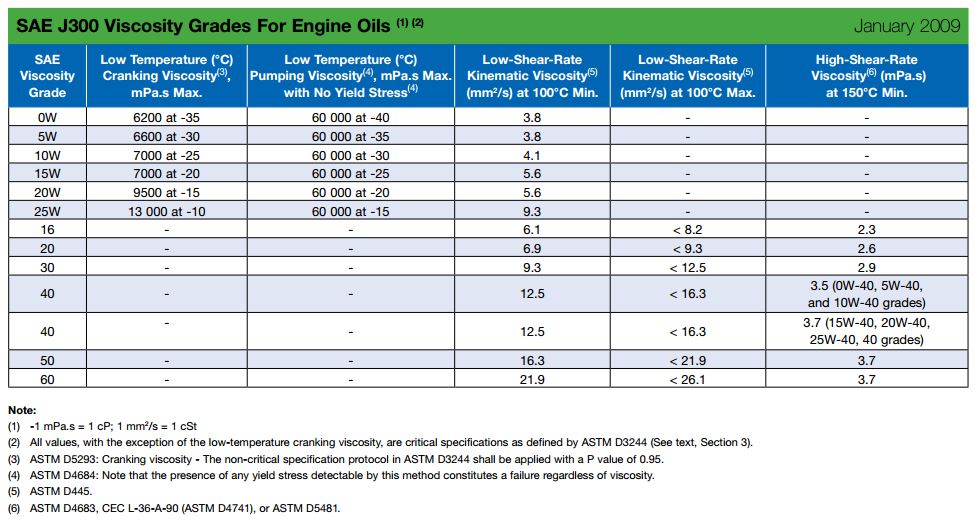Thank you -- that was very helpful.
Originally Posted By: OVERKILL
Originally Posted By: T-Stick
I understand the w for winter is a theoretical weight of measure.
No, it isn't. The "W" designation simply indicates an oil's ability to pump and not impact cranking speed at specific temperatures.
Think of it as two bars, one far more strict than the other, that indicate a ceiling for a designation.
As an oil cools, it thickens. They all do. When you get a ways below 0C, testing via CCS and MRV, viscosity roughly doubles for every 5C drop in temperature. As soon as an oil crests the ceiling for CCS viscosity for a designation, that sets its W rating. Likewise, if it exceeds the MRV limit, it would receive the next grade up. From what I've observed, it seems to be CCS that generally is exceeded first.
Look at SAE J300:
Say we had an oil that was 6,000cP at -25C tested via CCS. At -30C, that oil would be ~12,000cP, meaning it would be above the limit for the 5w-xx designation (6,600cp) so it is then assigned the 10w-xx rating unless for some wacky reason it's >60,000cP @ -30C on the MRV test.
Originally Posted By: T-Stick
What I was posing is something like this: If you have a 5w30 and a 10w30 with the same or very similar pour point of around -35F in 2 different vehicles, and the ambient temp is -0F; when you cold start both vehicles at -0F and then drive them till they reach their normal operating temps, would not the 10w oil provide better protection then 5w oil because both oils are pumping just fine but the 10w has a thicker viscosity?
Its more a question than a statement.
Pour point is largely irrelevant, CCS and MRV are the numbers that define cold temperature performance. What Pour Point can be used for is a rough indication of the quality of base stocks the oil is comprised of. An oil with an extremely low pour point like AMSOIL's 0w-40, which has a pour point of -60, indicates a significant portion of PAO in the base, which has naturally exceptional cold temperature performance. PAO is not required to meet a specific W designation, but it doesn't gel because it doesn't have any wax, so even if viscosity-wise, it fails MRV (it won't pump), it would still pour.
For your example, try to look at it like two curves that go from heavy (cold) to thin (hot). Assuming both oils have the same hot viscosity being xW-30's, the slope on the 5w-30 is going to be less sharp than the 10w-30. A 0w-30 would be less sharp still. And then we could toss a wrench into the mix and put in a Euro 0w-30 that would be thicker than all of them for the entire curve until we approach the CCS and MRV limits for the 5w-30 and 10w-30.
That help?




